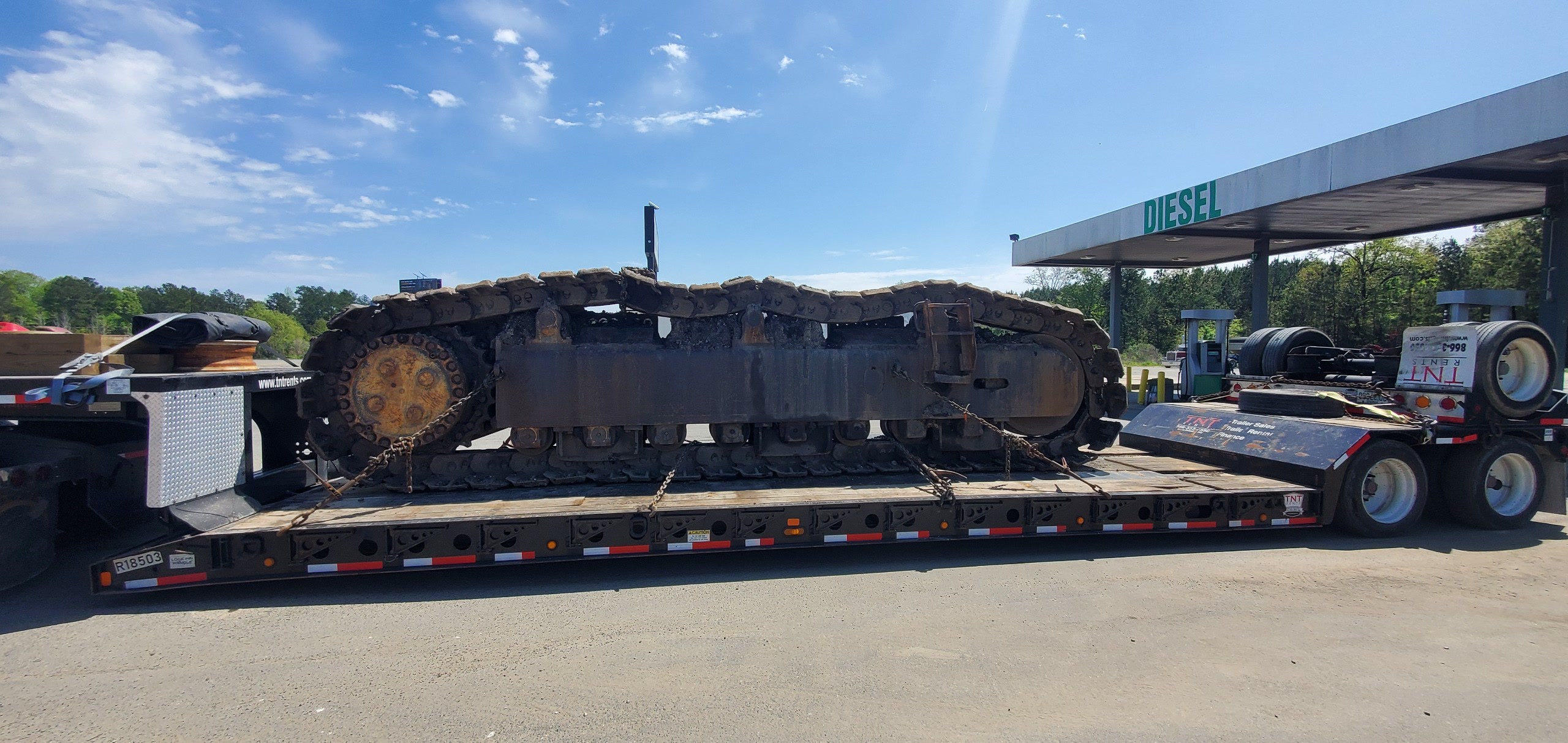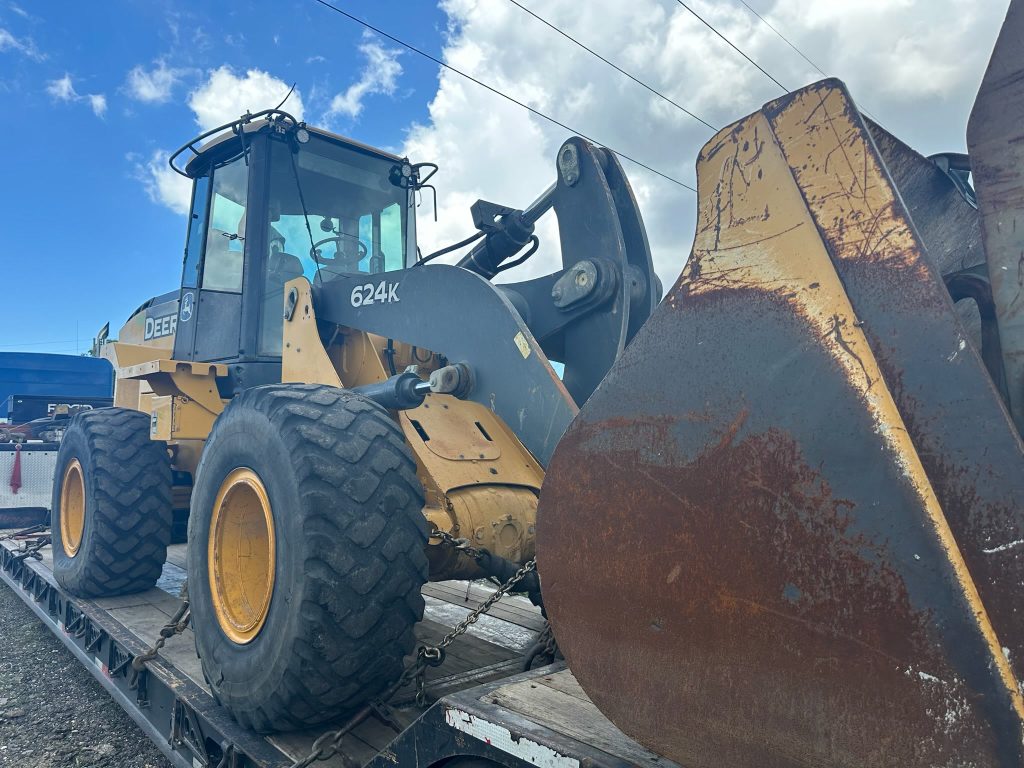What are Trailer Outriggers Used For? The 3 Types
Freedom Heavy Haul can offer expedited Pickup and Delivery for any size shipment anywhere in the USA. Contact us today for No Hassle, No Pressure Pricing.
In the world of transportation, particularly when dealing with oversized or heavy loads, trailer outriggers play a pivotal role. These extensions provide additional stability and support, making them indispensable for a wide range of hauling tasks.
In this article, you will learn what are trailer outriggers used for, the various types of outriggers, their uses, installation procedures, and more, offering a comprehensive guide on these crucial transportation components.
What are Trailer Outriggers Used For: The Basics
Trailer outriggers are extendable components attached to the sides of a trailer to widen its base and provide extra stability. Essential in the transport of oversized loads, they prevent tipping and enhance safety by distributing the load’s weight more evenly.
Types of Trailer Outriggers
The design and mechanism of trailer outriggers vary, each serving specific needs in transportation. Understanding these types can help in selecting the right outrigger for a given task.
Pull Out Outriggers
Pull out outriggers are extendable arms that can be pulled out manually or mechanically to increase the trailer’s width. These are commonly used in various transport scenarios due to their simplicity and effectiveness.
Swing Out Outriggers
Swing out outriggers pivot outwards from the trailer. They offer more flexibility and are particularly useful in situations where space constraints limit the use of pull-out types.
Permanently Attached Outriggers
Permanently attached outriggers are fixed extensions of the trailer. They provide constant extra width and are ideal for trailers consistently carrying wide loads.
Aluminum vs. Wood Outriggers: Material Comparison
Outriggers are typically made from aluminum or wood. Aluminum outriggers are lightweight and resistant to corrosion, whereas wood outriggers offer a more cost-effective solution but require more maintenance.
Hydraulic vs. Manual Outriggers: Operational Differences
The choice between hydraulic and manual outriggers depends on the load and frequency of use. Hydraulic outriggers provide ease of operation for frequent and heavy use, while manual outriggers are suitable for less intensive applications.
Functional Uses of Trailer Outriggers
Outriggers serve numerous purposes in the transportation industry, particularly in the realm of heavy haul transport.

Outriggers in Heavy Haul Transport
In heavy haul transport, outriggers are indispensable for maintaining stability when transporting large machinery, construction equipment, and other oversized items.
Outriggers for Construction Equipment Shipping
Outriggers play a critical role in the safe transportation of construction equipment, ensuring that such heavy and often irregularly shaped items are transported securely.
Outriggers in Modular and Prefabricated Building Transport
Modular and prefabricated buildings, due to their size and shape, require the additional support provided by outriggers during transport, preventing potential road hazards.
Safe Installation and Operation of Outriggers
The installation and operation of outriggers must be carried out with the utmost care to ensure safety and efficiency.
Installation Procedures and Safety Guidelines
Installing outriggers requires adherence to specific procedures and safety guidelines. This includes ensuring proper alignment, secure attachment, and regular inspections.
Maintenance and Inspection Practices
Regular maintenance and inspection of outriggers are crucial for safe operation. This includes checking for structural integrity, proper lubrication, and wear and tear.
Addressing Operational Challenges
Outrigger operation can present challenges, especially in uneven terrain or in tight spaces. It’s important to understand how to navigate these situations safely.
Choosing the Right Trailer with Outriggers
Selecting the right trailer with appropriate outriggers is crucial for the safe and efficient transportation of wide loads. Factors to consider include load requirements, compatibility with the trailer, and the specific demands of the haulage task.

Evaluating Load Requirements and Outrigger Capacity
Assessing the load requirements and the capacity of the outriggers ensures that the chosen system can adequately support the weight and size of the cargo.
Compatibility with Different Trailer Types
Not all outriggers are compatible with every trailer type. It’s important to match the outrigger to the specific type of trailer to ensure safety and functionality.
Custom Outrigger Solutions for Specific Needs
In some cases, custom outrigger solutions may be necessary to meet unique transportation requirements, especially for highly specialized or irregular loads.
Technological Advancements in Outrigger Design
The design and functionality of trailer outriggers continue to evolve, thanks to technological advancements. Innovations in materials, hydraulics, and control systems are making outriggers more efficient, safer, and easier to use.

Legal and Regulatory Aspects
Understanding the legal and regulatory aspects of using trailer outriggers is crucial. This includes knowledge of weight limits, permit requirements, and compliance with transportation laws, ensuring safe and legal operation.
Real-World Applications: Case Studies
Case studies of real-world applications provide valuable insights into the effectiveness and versatility of trailer outriggers. These examples highlight how outriggers have been instrumental in various successful transport projects.
Frequently Asked Questions
Here are some questions and answers that may be helpful for you:
What is the purpose of the outriggers?
The primary purpose of outriggers is to provide additional stability to a trailer or a vehicle, especially when it is carrying oversized or heavy loads. They achieve this by extending the vehicle’s base width, which helps to evenly distribute the load’s weight and prevent tipping or instability during transport.
Why are outriggers important?
Outriggers are crucial for ensuring the safety and stability of heavy haul transportation. They minimize the risk of accidents caused by load imbalance or tipping, especially while navigating turns or uneven terrain. This safety feature is essential in protecting both the load and other road users.
What are the disadvantages of outrigger systems?
The main disadvantages of outrigger systems include increased vehicle width, which can create challenges in narrow or congested spaces. They can also add to the overall weight of the vehicle and require additional setup and maintenance time.
What is an alternative to outriggers?
An alternative to outriggers for load stabilization is using vehicles with a wider chassis or trailers designed specifically for carrying wide loads. However, these alternatives may not offer the same level of adaptability and convenience as outriggers in various loading conditions.
What type of hazard does using outriggers prevent?
Using outriggers primarily prevents hazards related to vehicle tipping and load imbalance. This is particularly important when transporting heavy, oversized, or unevenly distributed loads, as it enhances stability and reduces the risk of accidents.
What are the advantages of an outrigger system?
The advantages of an outrigger system include improved stability and safety, the ability to carry wider and heavier loads, and adaptability to different types of cargo. Outriggers also enhance operational versatility, making them suitable for a variety of heavy haul applications.
Where do you put outriggers?
Outriggers are typically positioned along the sides of a trailer or vehicle, near the edges. Their placement is strategic to ensure the maximum widening of the base for optimal stability.
What is the best position for outriggers?
The best position for outriggers is fully extended horizontally from the sides of the trailer, at a length appropriate for the load size. This maximizes stability and ensures even weight distribution.
What are the different types of outriggers?
Different types of outriggers include pull out, swing out, and permanently attached outriggers. They also vary in material (aluminum or wood) and operation method (hydraulic or manual).
Why is an outrigger only on one side?
An outrigger may only be on one side if the load is unevenly distributed or if the vehicle is designed for specific tasks that require asymmetrical load balancing. However, most applications involve outriggers on both sides for even stability.
How do you steer an outrigger?
Steering an outrigger typically involves manually extending or retracting it to achieve the desired width. In some advanced systems, hydraulic controls allow for more precise adjustments. Steering here refers to the adjustment of the outrigger’s position rather than directional control of the vehicle.
Conclusion
In conclusion, trailer outriggers are a vital component in the transportation industry, particularly for heavy haul and oversized loads. Their correct selection, installation, and use are crucial for ensuring safety and efficiency in transport operations. As technology advances, outriggers will continue to evolve, further enhancing their capabilities and applications.







